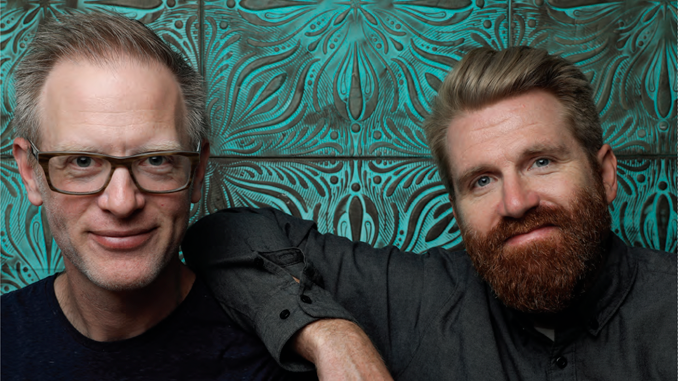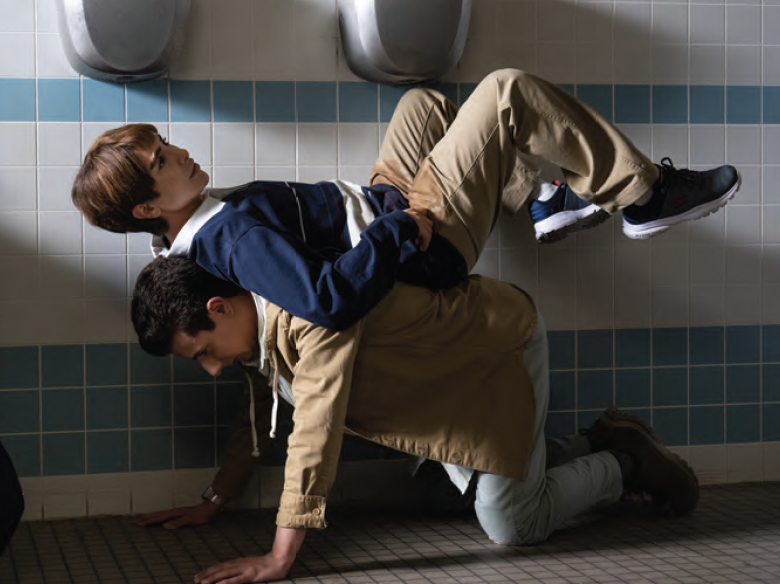
By Kristin Marguerite Doidge
When one door closes, another streaming platform opens. Or so the saying might go in today’s era of television.
Nasim Pedrad’s coming-of-age sitcom, “Chad,” has recently been reborn on Roku Channel, where its long-awaited second season premiered earlier this year. Pedrad, formerly a cast member of NBC’s sketch comedy staple “Saturday Night Live,” serves as not only the creator and showrunner, but also as the star of the show, writer, and executive producer.
The first season of “Chad” was originally put on hold for two years, then debuted as the top-rated scripted cable program of 2021, scoring 1.9 million viewers when it premiered in March 2021, according to TBS. Then, after being canceled in July of 2022 amid the Warner Bros./Discovery merger, the second season of “Chad” was picked up by Roku three months later.
Pedrad said season two editors George Mandl, ACE and Keenan Hiett (alongside Chad Rittenbaum, who served as assistant editor and was subsequently bumped up to co-editor) were “an utter joy” to work with.
Mandl and Hiett “both had such a great sense of the show’s tone and comedic sensibility,” Pedrad said. “They were as eager to mine moments for the unexpected and peculiar as they were to make sure the story tracks and that we’re taking care of our characters. Since the shoot days also included a good deal of improv, the episodes really came together in the edit. The two of them made that process really fun from beginning to end by taking risks, trying things, and crafting moments that weren’t necessarily obvious on the page.”
CineMontage recently spoke with Mandl and Hiett about working with Pedrad to persevere and to help tell her story in a way that embraces the awkwardness, humanity, and comedy that comes from growing up in an immigrant family.

CineMontage: What’s been most important for Pedrad in terms of achieving her vision for the show’s tone and feel?
Keenan Hiett: The show centers around Chad reconciling with his cultural background and, at the same time, trying to figure out his way through high school, so there are a lot of very specific tonal things that we played with.
She was precise with that in terms of individual moments and the awkwardness. I remember her telling me at one point that Season 1 wasn’t meant to be as cringe comedy as it ended up becoming known for, so I think there was some active effort to calibrate that a little bit more in the second season.
But the cultural side of “Chad” — being a first-generation American and an immigrant in an immigrant family — was a big focalpoint and one of the strong suits of the show. There are many great stories about immigrants in America, and families in America, and assimilating while trying to maintain your cultural background. But “Chad” has a very different voice. Nasim took the responsibility of it all very seriously and it shines through in the show in a big way.

George Mandl: Nasim is an improv genius. She comes from a heavy improv background. “SNL” often infuses some of that into the writing, and she also came through the Groundlings and Upright Citizens Brigade (UCB), so we really did have this embarrassment of riches in the edit. We had so much material. It wasn’t just “here’s the script and a couple little things.” Every scene had a lot of options.
The sensibility of the show and the comedy of the show is pretty specific. It’s subtle. What we think is going to work is not always what works best, and so we would often try things. In the spirit of improv, I think we approached the edit like that, and the result is that you have this beautiful character. I describe it as “cringe with big heart.” It’s got that person who is making every mistake available to him, but that you are stiall rooting for.

CineMontage: How did you help balance the “cringe” with the heart of the show this season?
Mandl: For me, it’s always about serving the story. A joke for the sake of a joke is not as meaningful as a joke that serves the story and the overall feeling that the audience takes away at the end. So I was always looking for that first. And then from there, it’s whatever makes me laugh the most, because as long as it does that first thing, that’s what I’m going to present as my favorite choice.
‘I describe the show as “cringe with a big heart.”’
I’d say a lot of the time, Keenan and I both found the tone somewhat quickly, and not to say that we read Nasim’s mind, but we were able to sense what we thought she would like. And then the changes were often very subtle, so it was a good collaboration in that way.
Hiett: There are a lot of little things that Chad does that just immediately make you laugh. When I get to stuff like that, it’s a quick “pull, drop it in, it’s staying in” kind of thing. A lot of those little eccentricities that the character has from episode to episode were important to keep a thread through the season.
The nuance of what Nasim does in that character is something we leaned into kind of heavily to highlight those things with Chad and keep that stuff going. Like George was saying, the heart side of the show really is its best quality. It’s a very funny show. It’s a very, at times, uncomfortable show. But the family is the foundational part of the show, and that was very easy for us to see in the dailies. You can see it as soon as the footage hits your machine that morning.
It was definitely a focal point to make sure that the chaos Chad brings is anchored by the support around him, both friends and family.
CineMontage: What were you looking for in choosing the best take?
Mandl: I think Keenan and I both approached this in the same way. We read the script, so we know what the story is, but then when the dailies come in, we let what happened on set influence what we do. The script has one version of the story, and then especially with someone like Nasim — who’s constantly thinking of other ways to be Chad in the moment — you get all this extra stuff. So you can tell, “okay, that one made me laugh the most,” and I can tell that it’s making her laugh the most. And it also still serves the story, the heart, the family.
Hiett: That stuff was always tricky, too, because it was the first take when she would do improv like that, and it was almost useless because you could hear other people laughing off camera, or other actors would bust or something like that. So usually, it was the second or third take when everybody knew it was coming. But that’s helpful for us; hearing people laugh on set, off-mic or whatever, is a sign that this is worth trying to get into the show.
This interview has been edited for length and clarity.





